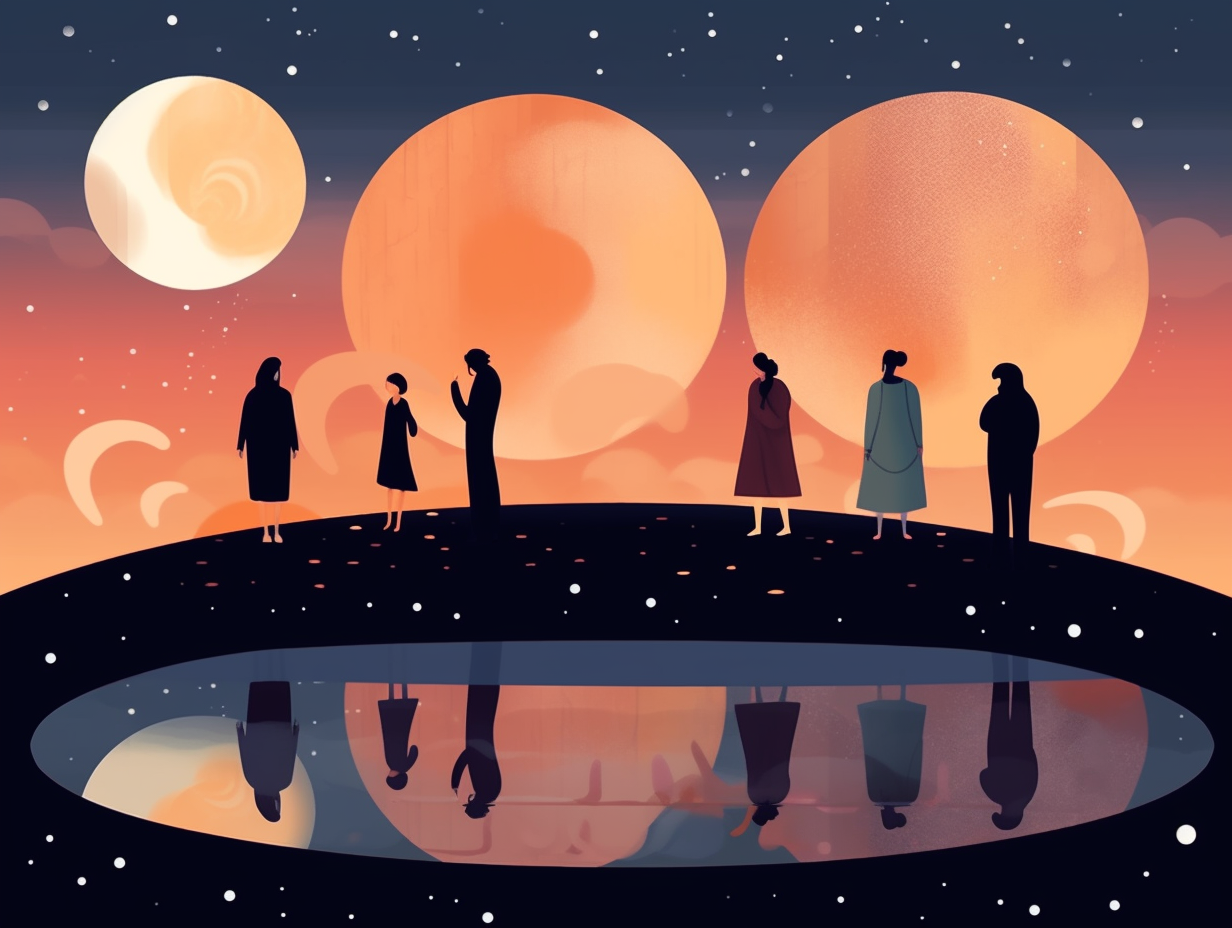Twinkling Tales: 12 Fantastic Fun Facts About the Gemini Constellation You'll Absolutely Love!

1. Meteor Shower Christmas Party
What do meteor showers and annual Christmas parties have in common? They both light up the night sky and leave spectacular trails at the end of the year: Feast your eyes on the Gemini constellation, home to the Geminids meteor shower that puts on a show in mid-December! This bright, fast-moving extravaganza is thanks to its dance partner, asteroid 3200 Phaethon, whose particles get all dolled up as they crash into Earth's atmosphere.
Source => space.com
2. Divine Twin Healers
Hold your horses, or rather, divine twin horsemen: The Gemini constellation is connected to healing and medicine in various mythologies, from Hindu's Ashvins to the Greek and Roman Dioscuri twins, who were celebrated for their life-saving abilities - and let's not forget the planet Mercury and its Caduceus, the classic medical symbol featuring those slithering snake buddies!
Source => ionicbondblog.wordpress.com

Discover the celestial love stories and moral lessons behind the constellations, as told by Artemis, the goddess of the hunt! 💫🏹😍
=> Fun Facts about Constellations
3. Cosmic Sibling Rivalry
Horseplay on the battlefield: In Greek mythology, the mortal Castor and his immortal twin brother Pollux had sibling rivalry reaching cosmic heights, with Castor being quite the equestrian expert and courageous warrior; they now shine brightly together as the Gemini constellation, forever inseparable in the night sky!
Source => earthsky.org
4. Spooky Sky Sights
If you thought Halloween was the only time for wrapped candy and spooky apparitions in the sky, then Gemini is here to prove you wrong: This constellation boasts fascinating deep-sky objects like the Eskimo Nebula, the Jellyfish Nebula, the Medusa Nebula, and NGC 2371-2, which eerily resembles a piece of wrapped Halloween candy, all of which can be observed through large telescopes.
Source => seasky.org

5. Gemini's Misunderstood Season
Gemini Constellation: where the stars have a "Twinning" moment! Yes, you heard that right, folks – think of it as cosmic magic and then some. But don't get too excited about star-hopping in Gemini season: Contrary to popular belief, the sun only passes through this zodiac constellation once between June 21 and July 20, not thrice as you may have heard. It bids adieu to Taurus at 15:00 UTC on June 21 and remains a Gemini groupie until it skedaddles into Cancer territory at 19:00 UTC on July 20.
Source => earthsky.org
6. Castor's Double Double Date
It looks like Gemini the Twins decided six was better than one in their celestial double date: Castor comprises three sets of double stars, creating a total of six stars entangled in this constellation, with Pollux being among the first to be known to have an extrasolar planet orbiting it.
Source => ontarioparks.com
7. Messier 35's Star-studded Party
When Gemini's celestial twins threw a stellar house party, they clearly forgot to enforce the guest list: Messier 35 is an open star cluster in the Gemini constellation, housing over 300 stars, 1,600 solar masses, and 64 binary star systems, all slightly less metallic than the sun.
Source => en.wikipedia.org
8. Han Solo's Star Twin
Hey Star Wars fans, did you know that Han Solo's twin might actually be a star named Pollux?: For real, Pollux, the brightest star in Gemini, has a confirmed planetary system - making it an interstellar celeb twin in its own way. Discovered in 2006, this galactic gem has an orbiting extrasolar planet named Thestias, boasting at least 2.3 times the mass of Jupiter and dazzling astronomers with a 590-day orbit around its star daddy, adding a touch of interstellar intrigue to our cosmic clan.
Source => en.wikipedia.org
9. Fashionable Eskimo Nebula
Once upon a frosty Nebula, there was an Eskimo who decided to wear the universe's trendiest fur-lined parka hood, unknowingly becoming the mascot of an astronomical phenomenon: Discovered in 1787 by William Herschel, the Eskimo Nebula in the Gemini constellation, also known as the Clown Face Nebula, was formed approximately 10,000 years ago when a Sun-like star experienced a cosmic wardrobe change, shedding its outer layers and ultimately paving the way for the creation of a white dwarf.
Source => constellation-guide.com

10. Medusa's Galactic Bad Hair Day
Talk about a bad hair day: the Medusa Nebula, in the Gemini constellation, looks like a cosmic version of that mythological creature with all the snakes on her head! Here's the real deal: it's an 8,800-year-old planetary nebula created by an aging red giant star shedding its outer layers into space, best viewed through a large telescope with an OIII filter.
Source => constellation-guide.com
11. Six-Headed Castor Hydra
Ladies and gentlemen, step right up and feast your eyes on the incredible, the astonishing, the fantastical six-headed celestial hydra of the sky: the mighty Castor, one half of the brilliant beaming duo in the Gemini constellation, is in fact a six-star system composed of three pairs of binary stars orbiting a common center of mass! Spectroscopes reveal the sleight of hand, separating what telescopes can only show as two stars into each of the dazzling double acts. The headliners are two scorching hot A-type stars, while the awe-inspiring sidekicks are cool M-type red dwarf wonders. This stellar troupe has a combined mass approximately six times that of our very own sun, making Castor the ultimate cosmic showstopper!
Source => earthsky.org
12. Pollux's Planetary Victory
In a cosmic game of "Who's Your Favorite Twin?," Pollux is definitely winning, boasting not only a brighter shine but also a planet sidekick: Pollux, the more luminous brother in the Gemini constellation, outshines his twin Castor with a distance of merely 33.7 light years from Earth and claims the title of the brightest star in the sky with a known planet orbiting it, which is at least 2.9 times the mass of Jupiter and orbits every 1.6 years at an average distance of 1.69 astronomical units.
Source => astropixels.com
Related Fun Facts




















